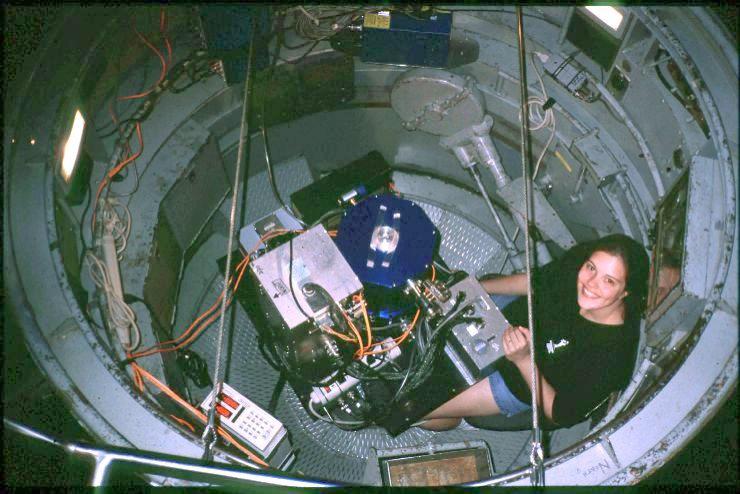
Credit & Copyright: Paul Weissman, JPL. Click on the image above to see a large (710 kB) version of the image.
After the sun has crossed the celestial equator, heading towards southern latitudes, people (at least in the northern hemisphere) like to flip trough phtographs to remember their summer vacation. Melissa Williams, senior student majoring in astronomy at the Valdosta State University in Georgia, USA, will find some photos in her album that look somewhat different - like the one shown below: Here, she is seen sitting in the prime focus cage of the 200" Hale telescope on Mt. Palomar, next to the Large Format Camera, which consists of six 2048 x 4096 CCDs, covering a roughly circular area, 25' in diameter at a scale of 0.18"/pixel. The camera is liquid nitrogen cooled.

Through a program sponsored by NASA, Melissa Williams joined Paul Weissman and his group at NASA's Jet Propulsion Laboratory. "We have a program to observe asteroids and comets which are targets of spacecraft missions. We accomplish the astrometric part of this by hiring summer students, training them in Astrometrica, and having them reduce all of our astrometry for the year", Weissman explains. Last year, they have been working on (5535) Annefrank, the flyby-target for the Stardust mission. "Another group at JPL is responsible for developing ephemerides for spacecraft mission targets. One of the scientists showed me the residuals to the orbit fit for our observations, mostly done with a 24" f/16 telescope with 0.52" pixels. The residuals were all less than 0.5" and most times were less than 0.3"."
Related Links: